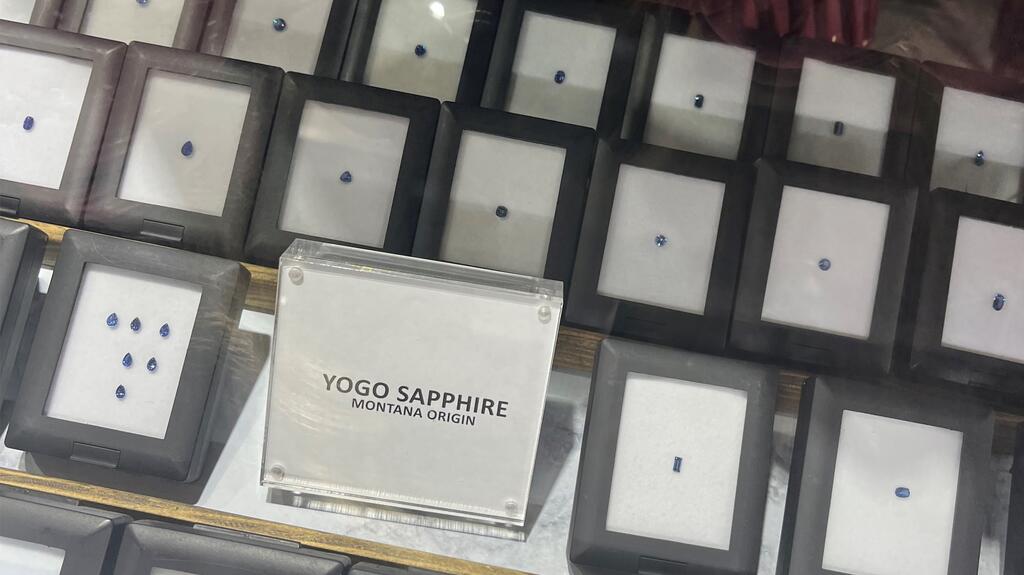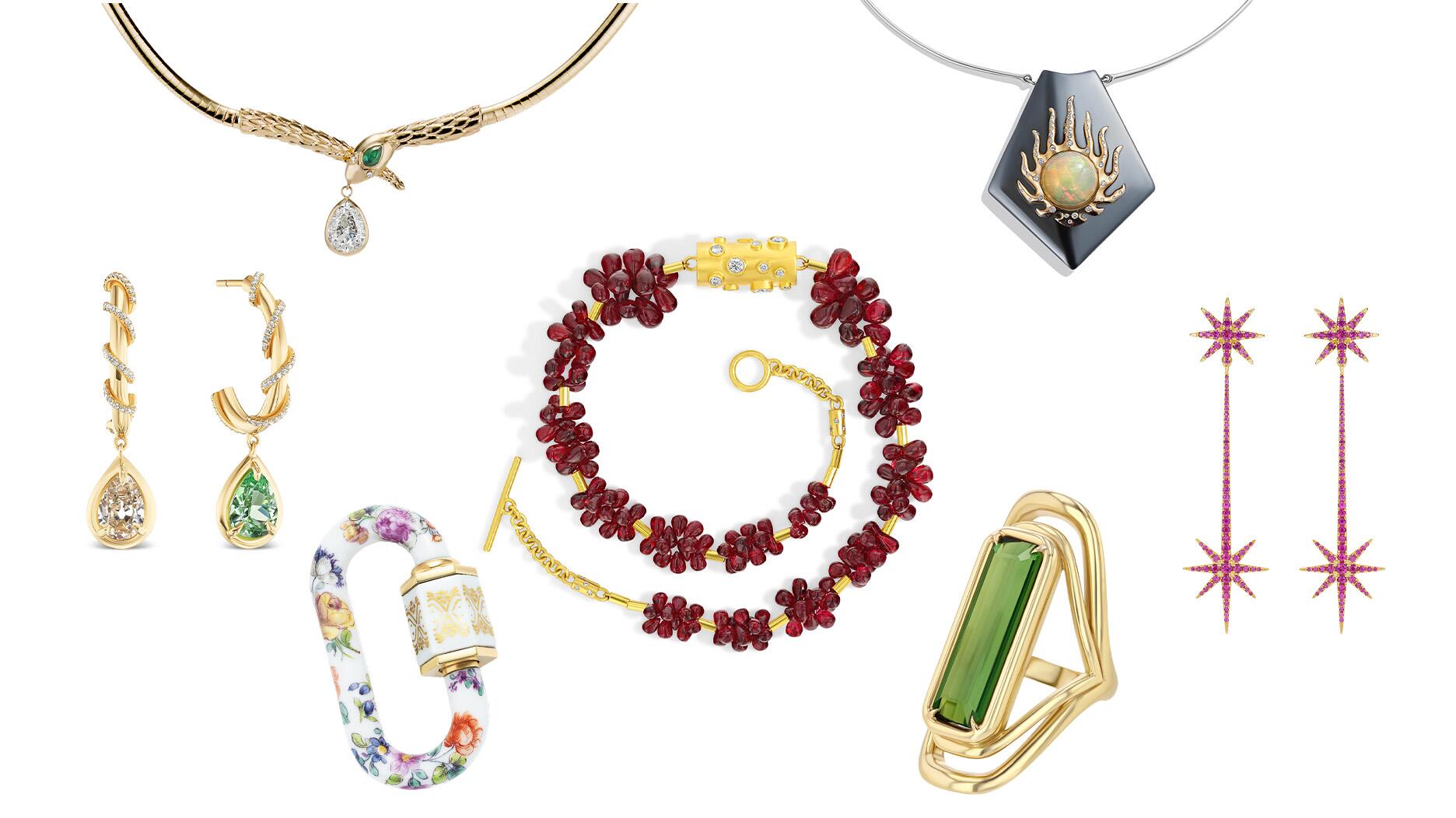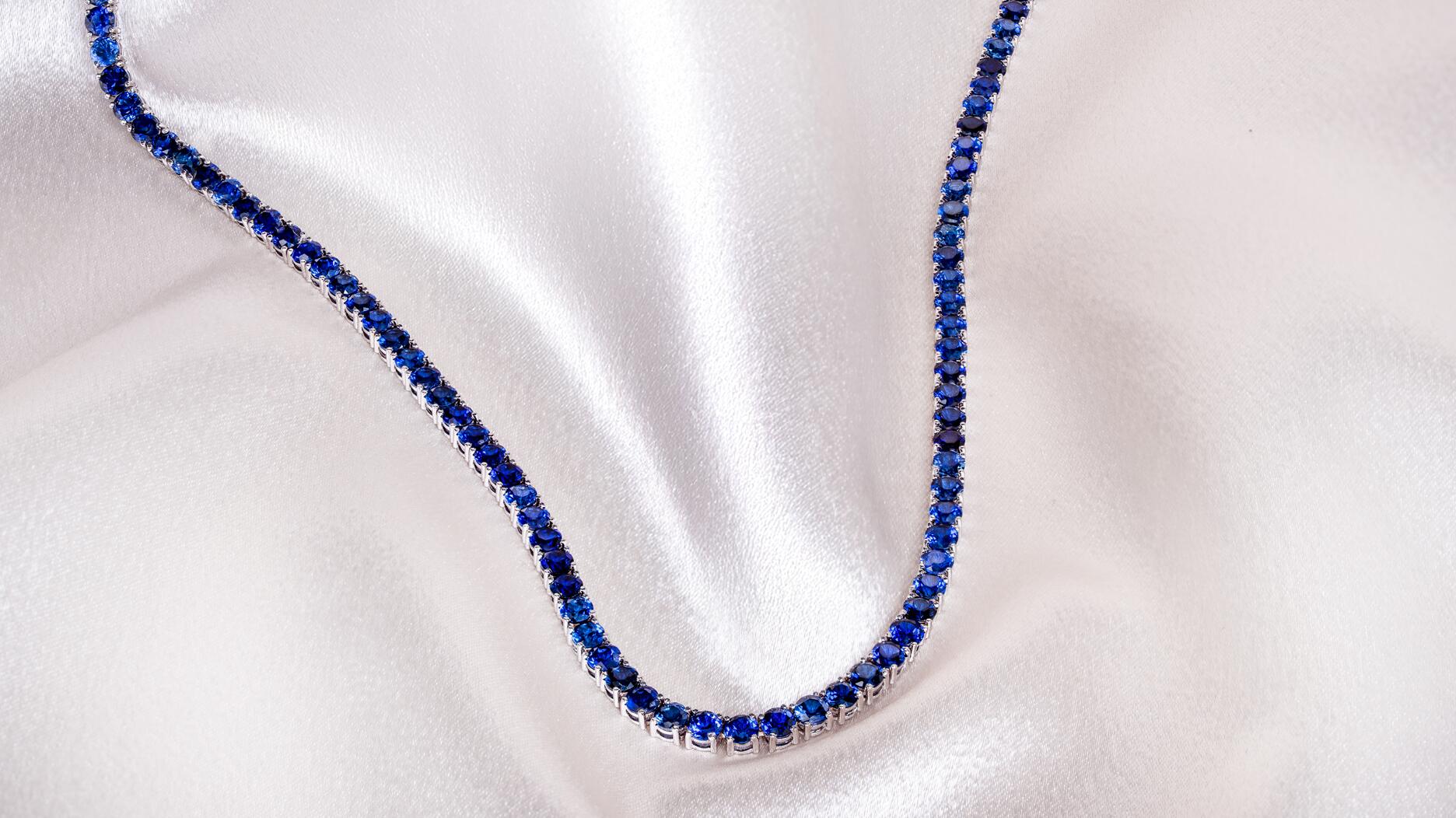Hot Colors, Higher Prices, and Willing Buyers: 5 Observations From Tucson
Senior Editor, Gemstones, Brecken Branstrator rounds up what she heard and saw on the show floors in Arizona.

The desert city’s annual slate of gem shows took place last week, although they were not without their challenges—plenty of buyers and exhibitors alike, especially international, weren’t able to make it.
But those who were able to travel there were met with a lot of excitement and buzz around the return of the shows.
While I was disappointed the education sessions at AGTA GemFair were canceled and the AGA’s annual gemological conference was rescheduled, it gave me plenty of time to walk around the various Tucson shows and talk to exhibitors.
Here are a few of the insights I picked up from conversations and my own observations.

Attendees Came to Buy
At the various loose stone shows, I posed the same question to exhibitors: How is it going?
Most of them had the same answer—it had been a great show.
Some mentioned the holiday season into January had gone so well they were already feeling good, while a few others said within the first few days of the show, they were already up over 2020.
A GJX exhibitor noted something interesting that seemed representative of what I’d heard elsewhere—rather than looking at what an exhibitor had to offer, taking notes, and walking away to explore more options before returning, more buyers were committing to goods immediately this year.
All in all, it seemed that though there might not have been as many buyers present, those that were there were ready to spend, a theme I believe will resonate among many of the industry’s trade shows.
And the Color of the Year Is …
Much like 2020, I’d like to call 2022 the year of … teal.
When chatting about what buyers were looking for in Tucson, exhibitors mentioned teal more than a handful of times. It’s great news for Montana sapphires—there’s a lot of opportunity ahead of them.
Likewise for spinel, particularly the gray colors.
There were also a few mentions of the popularity of morganite at the shows as well as soft- or minty-green garnets or beryl, which made me wonder—was the prediction I heard in 2020 about the return of pastels coming to fruition?
After a few years of vibrant, saturated pops of color being on top, it would be an interesting change.
One gemstone cutter at the Pueblo show said he had showed up with quite a few sphene stones and, yet, had only one left when I visited on Wednesday.
Sapphires, zircons, and garnets also got many mentions, but before I end up just listing all the gemstones, I can summarize this section with an apt observation from a GemFair dealer—people were buying whatever they could get their hands on that they thought they could sell for a profit.
Supply is limited after the last two years, after all, and so many buyers were snapping up what they could when they could.
Several exhibitors also brought up specific cuts and shapes when I asked them what attendees were looking at—cabochon sets for one lapidary company, “anything in kites” for another, as well as sugarloaf cabochons and matched hexagons, with one designer even saying they didn’t need new material, just new cuts.
It’s not totally surprising since there’s been an increased focus on special or different cuts over the past few years, but the trend has perhaps been helped along by the limited amount of goods available.
What Pricing Looked Like
Pricing was an interesting factor at play at this year’s shows. Unsurprisingly, prices were up for much material being offered.
Interestingly, one designer noted prices were inconsistent among exhibitors at the start, adding she noticed them then trying to correct in real time as the show was going on, presenting her with a new challenge.
Another dealer also said he had people coming to his booth and asking whether stones were old stock or new stock, inquiring because they thought the former might be more affordable.
While not everyone had to raise prices, depending on their inventory levels through the pandemic, it does seem like they will hold firm for a while across the board.
It’s been a tough two years in many respects but from an editorial perspective, I’ve found it difficult to cover the market given the way COVID impacted mining activity and trading activity.
I must’ve said to dozens of people while I was in Tucson that I had not only missed having conversations with the industry but the regular updates on what was going on at the source. It is, after all, one of my favorite areas to cover.
Unsurprisingly, the lack of mining has also meant few new developments in sourcing and little to write about lately.
There weren’t many updates from the Tucson crowd about new material when I asked, but I thought it worth mentioning the few that came up: more blue zircon from Malawi, a really lovely saturated purple chalcedony from Ethiopia (see the Instagram post above) and a designer noting she found a new aquamarine source from Nepal.

Tucson’s Newest Attraction
There was so much chatter about the University of Arizona’s new Alfie Norville Gem and Mineral Museum prior to the gem shows—including my own stories about a gemstone tapestry and a collection of American gems on display—and anyone who visited will tell you it was well worth the hype.
The museum held a soft opening last year, but this marked the first time the industry got to celebrate it in a big way.
Many ventured over to the museum during the daytime, and still more turned out for GIA’s “Night at the Museum” event, where they announced the winner of this year’s Gianmaria Buccellati Award for Excellence in Jewelry Design (congrats to GIA graduate Meghan Simmons!) and the launch of the Alumni Collective.
As you wander through, the museum takes you beautifully from minerals and formation through to the mining, cutting, and polishing process to give visitors the full picture and make sure every aspect of the trade is covered.
Kudos to the team on a truly amazing museum. I look forward to many more years visiting.
The Latest

The special-edition egg pendant ingested in a New Zealand jewelry store was recovered after a six-day wait.

The “Love and Desire” campaign is inspired by the magic that follows when one’s heart leads the way, said the brand.

Two awardees will receive free tuition for an educational course at the Swiss lab, with flights and lodging included.

How Jewelers of America’s 20 Under 40 are leading to ensure a brighter future for the jewelry industry.

Berta de Pablos-Barbier will replace Alexander Lacik at the start of January, two months earlier than expected.


Sotheby’s held its first two jewelry sales at the Breuer building last week, and they totaled nearly $44 million.

Winners will receive free registration and lodging for its fourth annual event in Detroit.

Roseco’s 704-page catalog showcases new lab-grown diamonds, findings, tools & more—available in print or interactive digital editions.

Here are six ideas for making more engaging content for Instagram Reels and TikTok, courtesy of Duvall O’Steen and Jen Cullen Williams.

The honorees include a notable jewelry brand, an industry veteran, and an independent retailer.

Carlos Jose Hernandez and Joshua Zuazo were sentenced to life without the possibility of parole in the 2024 murder of Hussein “Sam” Murray.

Yood will serve alongside Eduard Stefanescu, the sustainability manager for C.Hafner, a precious metals refiner in Germany.

The New Orleans jeweler is also hosting pop-up jewelry boutiques in New York City and Dallas.

Set in a Tiffany & Co. necklace, it sold for $4.2 million, the highest price and price per carat paid for a Paraíba tourmaline at auction.

The jeweler’s “Deep Freeze” display showcases its iconic jewelry designs frozen in a vintage icebox.

Take luxury gifting to new heights this holiday season with the jeweler’s showstopping 12-carat sphene ring.

This year's theme is “Unveiling the Depths of the Ocean.”

In its annual report, Pinterest noted an increase in searches for brooches, heirloom jewelry, and ‘80s luxury.

Starting Jan. 1, customers can request the service for opal, peridot, and demantoid garnet.

The 111-year-old retailer celebrated the opening of its new location in Salem, New Hampshire, which is its third store in the state.

The new catalog features its most popular chains as well as new styles.

The filmmaker’s personal F.P. Journe “FFC” prototype was the star of Phillips’ recent record-setting watch auction in New York.

The new location in the Design District pays homage to Miami’s Art Deco heritage and its connection to the ocean.

Inflations, tariffs, and politics—including the government shutdown—were among consumers’ top concerns last month.

“Longtime favorite” presenters, as well as first-time speakers, will lead talks and workshops at the annual event in Tucson next year.

Silas Smith of Meridian Metalworks won the challenge with his pendant that blends Australian and American landscapes.

The sale of the 31.68-carat, sunset-hued stone was part of Sotheby’s first series of events and auctions in Abu Dhabi.





























